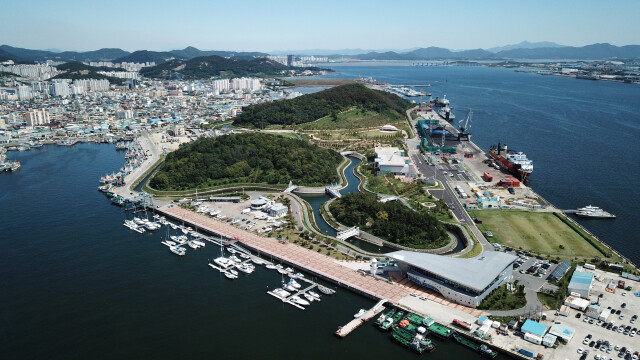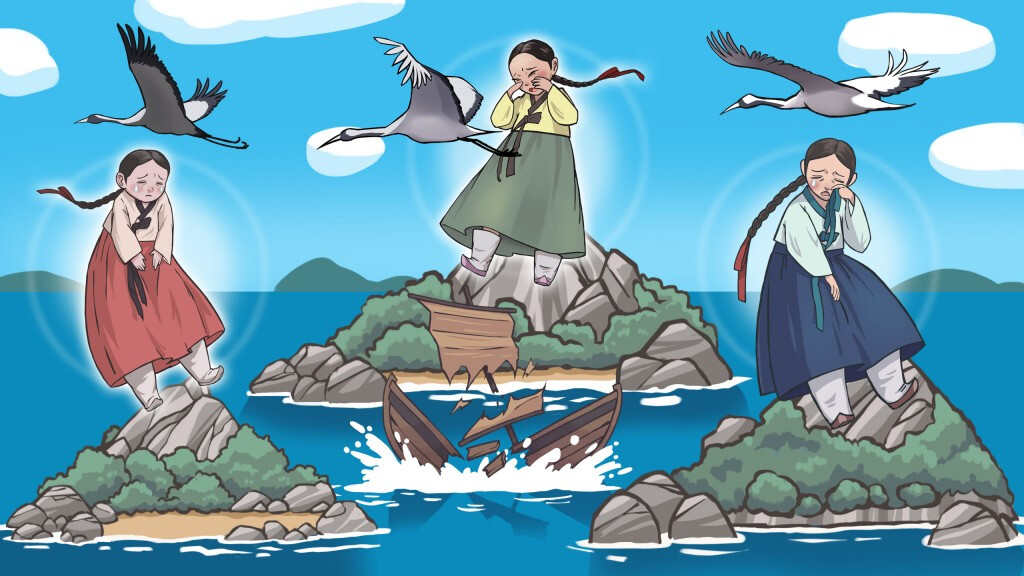
Mokpo, South Korea - Situated off the coast of Mokpo in Jeollanam-do province, Samhakdo Park is more than just a recreational space for citizens. It's a unique location that holds within its boundaries a tumultuous history, a heart-wrenching legend, and significant roots of Korean popular music. Contrary to its beautiful name, which originates from the legend of three cranes descending, Samhakdo has undergone a dramatic transformation from islands to land and finally to artificial islands. Let's delve into the diverse stories embedded in this remarkable journey.
The Breath of K-Pop's Mother, Lee Nan-young
Tracing the origins of Korean popular music inevitably leads to the immortal song "Tears of Mokpo" and the name of singer Lee Nan-young (1916–1965). To simply categorize her as a trot singer during the Japanese colonial era would be a gross understatement of her musical spectrum. Songs like "Blue Dream of a Tea Room," "Red Sleeves of the Harbor," and "Dream of the Sea," released between 1939 and 1940, boldly incorporated elements of swing jazz, scat, and blues – groundbreaking attempts that broadened the horizons of Korean popular music.
Furthermore, Lee Nan-young was a member of the "Jeogori Sisters," a group considered a precursor to modern girl groups, injecting fresh energy into the popular music scene. She was a versatile entertainer, proficient not only in traditional folk songs and new folk songs but also appearing in musical films.
Lee Nan-young's musical prowess didn't stop there. After her composer husband, Kim Hae-song, was abducted during the Korean War, she channeled her grief into nurturing the "Kim Sisters," a girl group composed of her daughters and nieces, showcasing her pioneering spirit as a producer. The Kim Sisters achieved international success, appearing a remarkable 22 times on the popular American TV show "The Ed Sullivan Show" around the time the Beatles were establishing themselves in the US market, signaling the global potential of K-Pop. Lee Nan-young herself even appeared on the show, performing Arirang with the Kim Sisters, leaving a lasting impression.
Behind the dazzling stage presence lay the shadow of hardship and misfortune that a woman of her time had to endure. Early poverty and struggles, prolonged marital discord, and the painful reality of raising seven children alone after her husband's sudden death constantly weighed her down. The unexpected death of her common-law partner, fellow singer Nam In-soo, brought profound loss, and in her later years, she battled drug addiction. This turbulent life often draws comparisons between Lee Nan-young and the tragic French chanson singer Édith Piaf.
In 2006, Lee Nan-young's remains, which had been interred in Paju, Gyeonggi-do, were moved to Samhakdo Park in Mokpo to honor her musical achievements and life. This marked Korea's first natural burial, and her memorial area is now called "Nanyeong Park" within Samhakdo Park.

Three Transformations: The Curious Fate of Samhakdo as an Artificial Island
Mokpo's Samhakdo is an island with a unique history of transformation: "island → land → (artificial) island." Originally the collective name for three islands – Daesamhakdo, Jungsamhakdo, and Sosamhakdo – Samhakdo has long been intertwined with the lives of the people of Mokpo.
During the reign of King Sejong (1439), it was a national land where soldiers from the Mokpo naval base would travel by boat to gather firewood. It also suffered the pain of being sold cheaply to the Japanese during the Japanese colonial era. However, after liberation, it returned to the embrace of the citizens, serving as both a place to live and a recreational area.
In 1968, Samhakdo underwent a significant change, becoming connected to the mainland through a large-scale land reclamation project. A port was constructed here, and customs offices were established, turning it into an important hub during the industrialization era. However, in the 2000s, growing calls from citizens to restore Samhakdo's original appearance led to the full-fledged promotion of a park development project. The former port facilities were gradually relocated to the outskirts, and the three islands were transformed into Samhakdo Park.
A particularly striking change was the creation of a 7-meter-wide artificial waterway, making the three islands appear to float on water as artificial islands. Twice a day, with the high and low tides, seawater flows into this waterway, adding to the islands' vitality. In 2006, Nanyeong Park, commemorating Lee Nan-young, was established, and in 2013, the Mokpo Children's Maritime Science Museum, a center for marine science education, and the Kim Dae-jung Nobel Peace Prize Memorial Hall, honoring the former president, opened their doors, transforming Samhakdo Park into a complex space encompassing education, culture, and recreation.

The Sad Love Story of Three Cranes Asleep in Legend
The name Samhakdo (三鶴島), meaning "Three Crane Island," is associated with a beautiful story that the islands resemble three young cranes leaving their mother's embrace and landing on the Yeongsan River. However, behind this name lies a heartbreaking love legend.
Long ago, three beautiful maidens living in the village deeply admired a young man who was devoted to asceticism on Yudalsan Mountain. However, the young man did not reciprocate their feelings, and the three lovelorn maidens eventually died. Their spirits are said to have become three cranes, sadly flying around Yudalsan. The young man, learning of this belatedly after completing his asceticism, saw the three cranes and shot them with his bow. The cranes fell into the sea, becoming the three islands in their place – a sorrowful tale.

The Scenery of a Port Embracing Tears and Sorrow
For anyone with an appreciation for harbors and seascapes, a leisurely stroll through Samhakdo Park will undoubtedly take a considerable amount of time, allowing for full immersion in its beauty. Along the walking paths that begin on the hill where Lee Nan-young's tomb is located, fallen red camellia petals offer solace to the potentially bleak winter park scenery. Under the low-hanging gray sky, the faintly visible Yudalsan Mountain and Mokpojin silently stand guard like a black and white photograph.
Walking along the infinity (∞) shaped waterway, designed for easy access for both disabled and non-disabled individuals, one side offers views of pine forests and red camellias, while the other presents the blue sea and docked ships, delighting the eyes. Exploring the yacht marina with its cozy cafes and the lively street food stalls on one side of Sosamhakdo, a desire to get a panoramic view of Samhakdo Park naturally leads visitors towards Mokpojin across the harbor.
From Mokpojin, the expansive Mokpo Port and Samhakdo come into full view. Jeon Young-ja, a cultural tourism commentator for Mokpo City, explains, "Mokpo is like a gateway to many islands, which is why the saying 'Mokpo is a port,' also the title of Lee Nan-young's song, became famous. When viewed from Mokpo, Samhakdo is a symbolic representation of all the islands."
Listening to her explanation, the title and poignant lyrics of Lee Nan-young's signature song, "Tears of Mokpo," resonate with a deeper meaning. It seems to embody not just the tears of a port city but the sorrow and grief experienced by countless individuals during a turbulent era, as well as longing for those who have departed.
In spring, Samhakdo Park is said to be covered in a spectacular display of colorful tulips. Walking among the tulips in the warm spring breeze, perhaps the fragrant scent of the flowers will permeate the deep blue waves of Samhakdo, replacing the soulful "Sailor's Song." Embracing tears and a port, and holding the origins of K-Pop, Samhakdo stands silently today, offering visitors a rich tapestry of stories and beautiful scenery.
[Copyright (c) Global Economic Times. All Rights Reserved.]






























